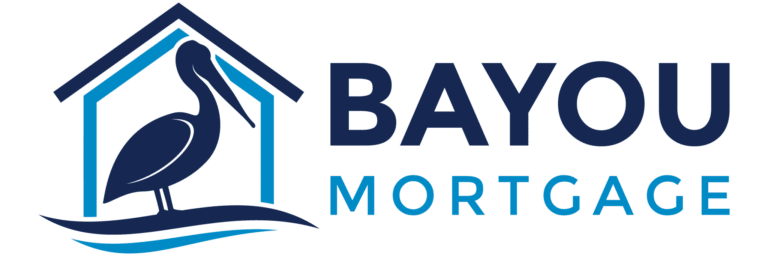Getting approved for a home loan is easier than you think. With a few simple steps, you can be well on your way to having your own mortgage. Keep reading below to learn how.
Pre-Qualification and Pre-Approval Aren’t the Same Thing
Let’s start with a myth that confuses many borrowers. Many people think pre-qualification and pre-approval are the same thing. They aren’t. They both start with pulling your credit, but the similarities end there.
What’s a Pre-Qualification?
A pre-qualification is an estimate of what you can afford. Why is it an estimate? Lenders base the answer on verbal information. They pull your credit, but everything else is verbal including:
- Annual income
- Assets
- Debts
- Length of employment
Your file doesn’t go through underwriting. No one evaluates your information – often times it’s an automated system providing the answer based on the provided information.
While you may think you know what you can afford, a pre-qualification isn’t a promise to lend.
What’s a Pre-Approval?
The pre-approval takes the pre-qualification one-step further. You go through the same steps. The lender pulls your credit and asks about your income, assets, employment, and debts. But, you must provide written proof of everything you stated. A few examples include:
- 30 days’ worth of paystubs for the borrower and co-borrower
- Last 2 years’ W-2s
- Last 2 years’ tax returns (if needed)
- Last 2 months’ of bank statements or investment statements
An underwriter evaluates all of this information compared to the desired loan program. If you meet the guidelines, the underwriter provides a pre-approval letter or conditional approval letter. Sellers and realtors look for this letter. It shows your seriousness and capability in buying a home.
The conditional approval focuses on three things – credit, income, and assets.
Understanding Credit Scores
Lenders typically look at your mortgage credit score first. Without the right score, lenders can’t move forward with your loan. Notice we said ‘mortgage credit score.’ This is different from the score you’ll see on CreditKarma or similar sites. Mortgage credit scores are provided by FICO and are strictly for mortgage lending.
You actually have three FICO scores from:
- Trans Union
- Equifax
- Experian
Lenders use the middle credit score of all three numbers. For example, if you have 650, 675, and 700 credit scores, lenders use the 675 for qualifying purposes. If you apply for the loan with a co-borrower, lenders use the lower middle score between the two borrowers. For example, if your partner’s middle score was 670 and yours was 675, the lender will use your partner’s 670 for qualifying.
Do you want to know your credit scores before applying for a loan? Check out myfico.com.
Do you want access to your credit report without scores? Get free access at www.annualcreditreport.com. You can pull one credit report from each bureau once a year.
What Does Your Credit Score Say?
Like we said above, your credit score is an initial factor. Lenders look at it to determine:
- The appropriate loan program
- The right interest rate
- Your existing debt compared to your current income
- Mortgage insurance cost
What Does Your Credit History Say?
Lenders look at more than your credit score. They evaluate the history too. How well do you pay your bills? How many bills end up in collections, or as charge offs, or judgments? Have you ever filed for bankruptcy or lost a home in foreclosure?
Lenders use this information as a piece of the puzzle. Don’t assume because you filed for BK that you can’t get a loan. That’s not the case. You may have to wait a specific amount of time or wait until your credit score increases, but it’s not a death sentence.
Lenders use your credit information along with your income, asset, debt, and employment information to make a decision. Your credit history and score are just a small piece of the puzzle. Yes, you need a minimum credit score to meet the program’s requirements, but all other factors must fall into place too.
Understanding Income
You could have the best credit scores in the world, but if you don’t have enough income, you may not get a loan. Your income is important. Lenders look specifically at your gross monthly income. Calculate yours accordingly:
- Hourly employees – Lenders use your hourly wage reported on your paystubs. If you work anything but 40 hours, lenders will average your income over the last two years. This allows them to account for the ‘highs’ and ‘lows’ you experience as an hourly employee.
- Commission employees – If more than 25% of your income is a commission, lenders take an average of your last two years’ income. Again, this accounts for the highs and lows that occur often in sales or commission-based employment.
- Overtime – Like the commission, lenders average overtime over the last two years. If you don’t have a two-year history of overtime, lenders may not use it to qualify you for the loan. Lenders like a two-year history to prove the likelihood that you’ll continue to get overtime.
- Self-employment income – Lenders use your last two years’ tax returns to determine your self-employment income. This makes it hard for some self-employed borrowers, especially if they report a loss or don’t report their full income. Lenders take a 24-month average of your self-employment income.
Once a lender calculates your gross monthly income, they’ll calculate your debt-to-income ratio or DTI. Lenders use the DTI to qualify you for a loan program.
Understanding the Debt-to-Income Ratio
To determine your DTI, lenders need to figure out your monthly debt obligation. They use your credit report, plus self-reported debts for this number. It includes things like:
- Mortgage payments
- Car payments
- Student loan payments
- Personal loans
- Minimum credit card payments
- Child support
- Alimony
Lenders total your debts and compare it to your gross monthly income. For example:
Your gross monthly income is $4,500. Your monthly debts include:
- Car payment – $450
- Credit card payments – $200
- Personal loan – $150
- Student loan – $50
Your total monthly expenses are $850. Your potential mortgage payment is $1,500 (including taxes and insurance). This puts your total monthly expenses at $2,350.
Your debt-to-income ratio is:
$2350/$4500 = 52%
A 52% debt ratio is higher than most loan programs allow and would make it hard for a lender to provide a pre-approval letter.
Alternatives Mortgage Loans
Lenders do offer ‘alternative’ programs that cater to borrowers like the one above that has a high debt ratio. They include:
One Year Tax Return Programs
If your financial success is recent (within the last 12 months), you may opt for a lender that offers the One Year Tax Return Program. Using your latest tax return, you can qualify for a loan. Of course, your latest tax return must show enough income that keeps your debt ratio low enough to qualify for the loan. Lenders may look for other compensating factors too, such as a high credit score or low debt ratio.
Bank Statement Loan
Bank statement programs eliminate the need for paystubs and tax returns. Instead, you provide bank statements as proof of income. These loans have more flexible guidelines, but in exchange, you’ll pay a higher interest rate and fees to make up for the lender’s risk.
Understanding Assets
Of course, lenders need to know how much money you have. You need money for the down payment and the closing costs. In some cases, you may also need reserves or money in excess of the down payment and closing cost money. Lenders measure reserves by the number of mortgage payments it covers.
For example, if you have $5,000 and your mortgage payment is $1,000, you have five months of reserves.
Sourcing the Assets
It’s important to understand that lenders must source your assets. In other words, money can’t just ‘appear.’ Lenders look at the last two months’ bank statements. Specifically, they look for large deposits. If you have any deposits that don’t coincide with your income, be prepared to prove their origination.
Ways to source the money include:
- Receipts from the sale of an asset
- Paystub from a tax refund
- Stock certificate from sold stocks
The lender can’t use funds from any deposits that you can’t prove. For example, your mom can’t write you a check for $2,000 and you just throw it in your account. You also can’t deposit cash and expect a lender to accept it. If you have any large deposits, let them sit for at least 60 days. Lenders allow you to use the funds once the money is there for at least two months.
The Bottom Line
Your credit, income, and assets work together to create your eligibility for a mortgage loan. You don’t need the ‘perfect qualifying factors.’ For example, a lower credit score may be offset by a large amount of assets and a low debt ratio. Or a high credit score can offset a high debt ratio. Lenders look at the big picture. Of course, lenders prefer all three factors to be perfect, but there are options for many types of borrowers.















